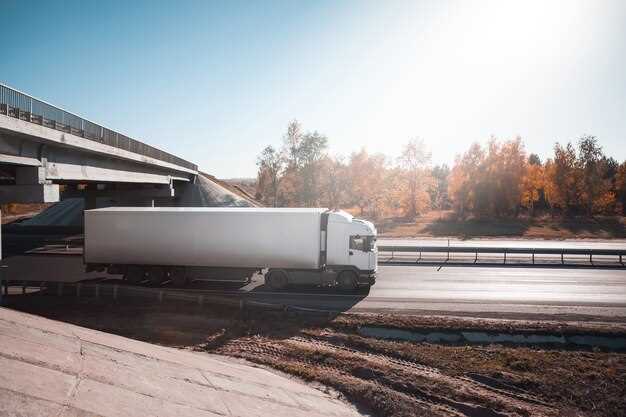

The trucking industry is poised for significant transformation in 2025, with several models taking center stage. As logistics and transportation needs evolve, manufacturers are stepping up their efforts to deliver trucks that not only meet these demands but also resonate with sustainability and efficiency. Increased focus on fuel economy and reduced emissions further shapes the market landscape, prompting a shift toward electrification and innovative technologies.
In this article, we will explore the most in demand truck models projected for 2025. From lightweight commercial trucks to heavy-duty models, each offering unique features aimed at enhancing performance and reliability, these vehicles are designed to accommodate the varying needs of businesses and consumers alike. By examining the trends and specifications of these upcoming models, we aim to provide insights into what drivers and fleet operators can expect in the near future.
As we delve deeper into the key players of the truck market for 2025, we will highlight the advancements being made in safety, technology, and comfort. This comprehensive overview will not only inform potential buyers but also guide industry stakeholders in making informed decisions about their future investments in truck models.
Analysis of Key Features Driving Truck Model Popularity
The popularity of truck models in 2025 can be attributed to several key features that align with current industry trends. First and foremost, fuel efficiency remains a priority. Models that incorporate advanced engine technologies and alternative fuel options are likely to capture market attention, as businesses aim to reduce operational costs and respond to environmental concerns.
Another significant factor is technological integration. Truck models equipped with cutting-edge safety features, such as collision avoidance systems and adaptive cruise control, are increasingly desirable. Manufacturers that invest in these innovations not only enhance driver safety but also attract fleet operators focused on minimizing accidents and optimizing insurance costs.
Connectivity is also a crucial aspect driving truck model popularity. Models that offer robust telematics systems provide real-time data analytics, enabling fleet managers to monitor vehicle performance and improve logistics efficiency. This trend towards smart technology fosters operational improvements and supports better decision-making.
Additionally, driver comfort and ergonomics play an essential role in model selection. Trucks featuring spacious cabins, advanced infotainment systems, and adjustable seating cater to the needs of drivers who spend long hours on the road. Manufacturers prioritizing these features are likely to see a higher demand for their models.
Lastly, customization options are becoming increasingly important. As businesses look to brand their fleets and cater to specific operational requirements, the ability to personalize truck models can significantly influence purchasing decisions. Versatility in options can set certain models apart in a competitive market, reflecting the diverse needs of customers.
Competitive Pricing Trends Among Top Truck Brands

In the rapidly evolving market for trucks, competitive pricing has become a focal point for manufacturers aiming to secure a strong foothold. As consumer preferences shift towards utility and sustainability, leading truck brands are adjusting their pricing strategies to meet these demands while maintaining profitability.
One significant trend is the introduction of modular pricing structures that allow customers to customize their trucks. This approach appeals to a diverse range of buyers, from commercial fleets needing specific configurations to individual consumers looking for value in their purchases. As brands like Ford, Chevrolet, and Ram enhance their offerings, the ability to offer competitive base prices alongside customizable features becomes a crucial selling point.
Additionally, advancements in technology are influencing pricing trends. Electric and hybrid truck models are on the rise, prompting brands to compete not just on initial cost but also on long-term savings. The total cost of ownership is increasingly part of the conversation, as fuel efficiency and maintenance costs play a critical role in consumer decisions. Companies are keen to position their electric trucks attractively priced to incentivize the transition from traditional combustion engines.
Another trend is the use of pricing assessments based on market demand and competitor analysis. Leading truck manufacturers are now employing sophisticated pricing strategies that factor in regional demand fluctuations, economic conditions, and competitor pricing movements. This dynamic pricing model allows brands to remain competitive in a volatile market while optimizing their revenue streams.
Lastly, promotional offers and financing options have become more prevalent, providing potential buyers with access to affordable truck models. This trend not only attracts new customers but also helps brands maintain a competitive edge by enhancing affordability in a cost-sensitive market.
Regulatory Changes Impacting Truck Model Design and Technology

As the trucking industry evolves, regulatory changes are significantly influencing truck model design and technology. Governments are implementing stricter emissions standards, requiring manufacturers to innovate and adapt to these new guidelines. This shift is fostering trends towards cleaner and more efficient engine technologies, compelling companies to invest in research and development.
Emission Regulations are among the most impactful policies affecting truck design. The introduction of low-emission zone regulations in urban areas has prompted manufacturers to create models that not only comply with these standards but exceed them. Electric and hybrid trucks are gaining traction, representing a crucial aspect of this transition. As a result, companies are reallocating resources to develop electric drivetrains and battery technologies, aiming to fulfill both current and future market demands.
Additionally, advancements in safety regulations are reshaping truck technology. Enhanced safety frameworks, such as the adoption of advanced driver-assistance systems (ADAS), are becoming essential. Features like automated braking, lane-keeping assistance, and collision avoidance not only improve road safety but also attract consumers keen on modern technology trends. Consequently, manufacturers are increasingly integrating these systems into new models, altering traditional design approaches.
Furthermore, the push for increased fuel efficiency aligns with regulatory goals, prompting innovations in aerodynamics and lightweight materials. Manufacturers are experimenting with composite materials and designs that reduce drag, subsequently enhancing fuel economy. This trend addresses both regulatory compliance and broader sustainability objectives, making trucks more attractive to environmentally conscious consumers.
In conclusion, regulatory changes are a driving force behind the evolution of truck models. Compliance with stringent emissions and safety standards is reshaping how manufacturers design and equip their vehicles, fostering a landscape where advanced technology and sustainable practices are paramount. As these regulations continue to evolve, the industry can expect further innovations and shifts that align with emerging trends in the market.